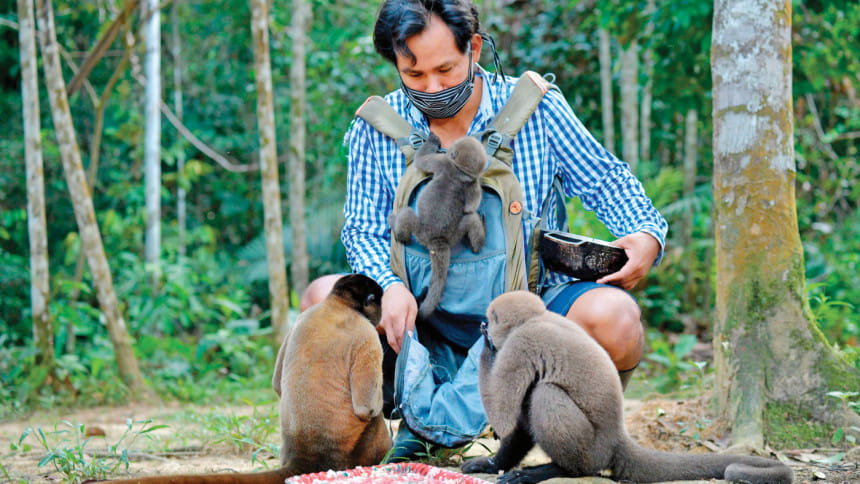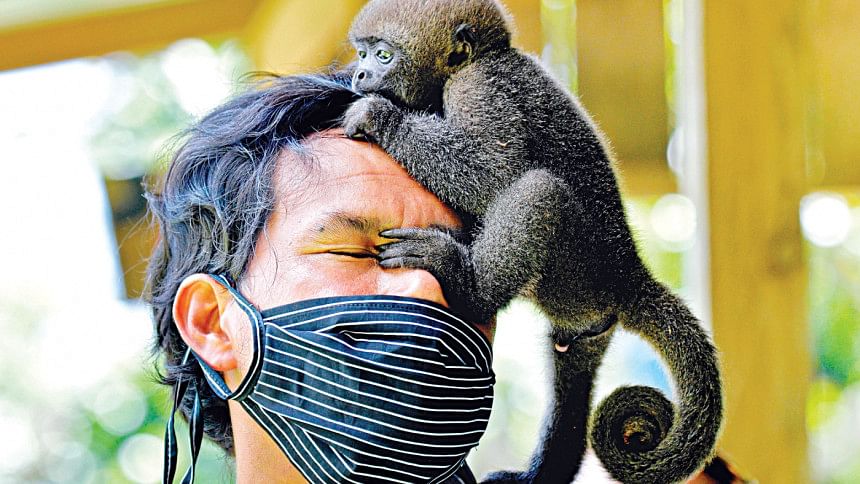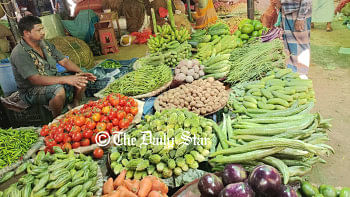Saving the Amazon’s orphan monkeys

Far from the rifle cracks that occasionally rip through the rainforest as local tribesmen hunt mature primates for their meat and soft pelts, a sanctuary in a corner of the Colombian Amazon is offering new life to the orphaned monkeys left behind.
The refuge run by a local leader, Jhon Jairo Vasquez, is giving them a second chance -- while gradually changing attitudes in the area -- in the indigenous settlement of Mocagua on the banks of the Amazon.
Vasquez has proved to be a father figure for one of the orphans, a three-month-old female woolly monkey, or Lagothrix, he's named Maruja.
The pair have become inseparable on his hikes through the rainforest, carrying the little primate in a sack on his back.
"I have become the father, and she's become the daughter," said Vasquez, 38.
"An indigenous family ate the mother."

Long prized by indigenous hunters for their meat and furry pelts, the woolly monkey is now classified by the International Union for the Conservation of Nature as Vulnerable, appearing on the IUCN's Red List of Threatened Species.
Given their thick brown coat and grey appendages, young woolly monkeys like Maruja are often hunted for the pet trade, with their mothers sometimes killed in the process.
Fourteen years ago, Vazquez helped found the Maikuchiga animal refuge located in the middle of the 700-strong Tikuna indigenous community in Mocagua.
Since 2006, he has been trying to convince locals of the damage caused by "over-hunting," as well as a flourishing illegal wildlife market.
Reluctant at first, the Tikunas have developed a taste for eco-tourism. "Rehabilitated" hunters have become guides who now "protect their wildlife," says Vasquez.
But traumatized orphans continue to arrive in Maikuchiga from other parts of the Amazon. Since its creation, the refuge has rehabilitated about 800 monkeys, according to Vasquez.
The community is located at a spot in the Amazon called the Triple Frontier, where Peru, Colombia and Brazil meet.
There is a long history of monkeys being hunted here for meat or for ritual purposes.
They are still shot from trees, mother and baby entwined as they fall, says Vasquez.
"The mother does not let go of her baby. And the little one falls attached to its mother."
The adult's flesh is roasted on a wood fire, as the meat is prized. The small survivors are sold as pets.
The lucky ones are rescued by Corpoamazonia, the Colombian government agency in charge of environmental protection, based in nearby Leticia.

 For all latest news, follow The Daily Star's Google News channel.
For all latest news, follow The Daily Star's Google News channel. 



Comments